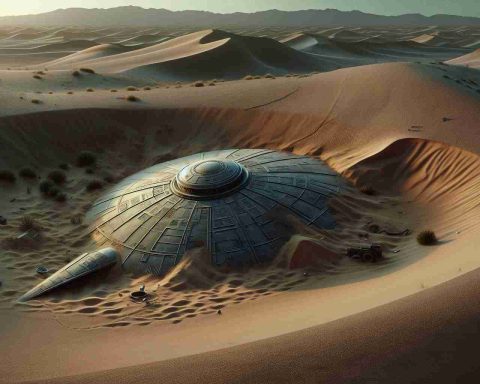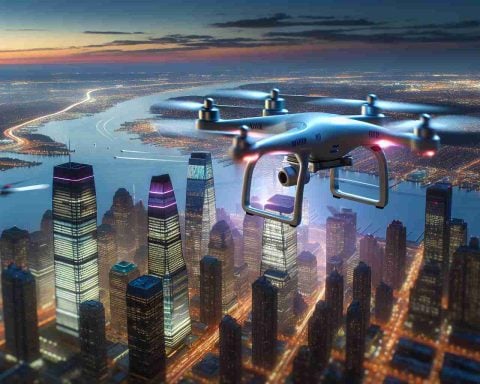On December 30, 2024, India made a groundbreaking leap in space technology. The Indian Space Research Organisation (Isro) executed an extraordinary docking operation that utilized the spent fourth stage of its Polar Satellite Launch Vehicle (PSLV). This ambitious mission successfully launched from Sriharikota at precisely 10 PM IST, deploying two satellites, each weighing approximately 220 kg, into a 475-km circular orbit.
The mission, known as the Space Docking Experiment (SpaDeX), is a significant technological demonstration involving a unique Bharatiya Docking System. This system will facilitate the merging of the two satellites, aptly named ‘Chaser’ and ‘Target’, by carefully adjusting their speeds from an astonishing 28,800 km/h down to a mere 0.036 km/h.
Equipped with advanced payloads, the first satellite features a high-resolution camera, while the second includes a miniature multispectral payload, aimed at resource monitoring and environmental studies. This mission also showcases the PS4-Orbital Experiment Module (POEM-4), making effective use of the PSLV’s spent stage for microgravity experiments over a prospective three-month duration.
With a period of approximately 66 days to execute the docking, Isro is poised to refine its autonomous rendezvous technology, a crucial step for future projects such as Gaganyaan, Chandrayaan-4, and the envisioned Bharat space station, heralding an exciting era of manned space exploration for India.
India’s Stellar Leap: The Future of Space Exploration Starts with SpaDeX
Introduction to SpaDeX
On December 30, 2024, India’s quest for advancements in space technology reached a new milestone with the Indian Space Research Organisation (ISRO) successfully conducting the innovative Space Docking Experiment (SpaDeX). This extraordinary mission not only deployed two satellites but also illustrated India’s growing prowess in autonomous space operations.
Key Features of SpaDeX
1. Bharatiya Docking System: At the heart of the SpaDeX mission is the unique Bharatiya Docking System, designed to enable the seamless docking of satellites in space. This technology represents a significant step toward enabling complex maneuvers for future space missions.
2. Satellite Details: The two satellites, referred to as ‘Chaser’ and ‘Target’, each weigh about 220 kg. The Chaser satellite is integrated with a high-resolution camera, while the Target satellite carries a miniature multispectral payload aimed at enabling detailed resource monitoring and conducting critical environmental studies.
3. PS4-Orbital Experiment Module (POEM-4): This mission showcases the PS4-Orbital Experiment Module (POEM-4), utilizing the PSLV’s spent stage for microgravity experiments that are anticipated to last approximately three months. This feature allows for in-depth studies and technology validations that are essential for future missions.
4. Autonomous Rendezvous Technology: The primary goal of the SpaDeX mission is to refine ISRO’s autonomous rendezvous technology. Successfully mastering this capability is crucial for upcoming manned missions, including Gaganyaan and potentially the establishment of a Bharat space station.
Upcoming Trends and Use Cases
The advancements demonstrated through SpaDeX pave the way for future endeavors in not only exploration but also in satellite servicing and refueling, which are gaining traction globally. As nations invest in space infrastructure, the ability to dock, repair, and refuel satellites will become increasingly critical.
Pros and Cons of the SpaDeX Mission
Pros:
– Technological Advancement: Enhances India’s position in global space technology.
– Resource Monitoring: Supports environmental studies critical for sustainable development.
– Foundation for Manned Missions: Lays groundwork for future human spaceflight missions.
Cons:
– Complexity and Risk: High-stakes nature of space missions can pose significant challenges.
– Investment Requirement: Continuous funding and investment are essential to sustain long-term projects.
Market Analysis and Innovations
As space agencies across the world, including NASA and ESA, advance their capabilities, ISRO’s focus on indigenous technology such as the Bharatiya Docking System aligns India with current global trends in space exploration. This innovation reflects a shift towards self-reliance in space technology, a significant factor as nations prepare for an intensified space race.
Predictions for Future Missions
As ISRO continues to refine its technologies, upcoming missions like Gaganyaan and Chandrayaan-4 are set to benefit from the insights gained through SpaDeX. The successful implementation of satellite docking technology ultimately heralds a new era of manned space exploration, with possibilities for international collaboration.
Conclusion
The SpaDeX mission marks a notable step into the future of space exploration for India. With its advancements in docking technology and ongoing commitment to scientific discovery, ISRO positions itself as a key player on the international space stage.
For more detailed insights on ISRO’s achievements and future projects, visit ISRO.


















